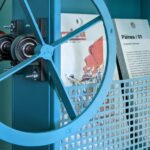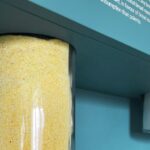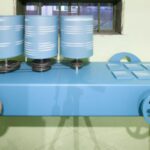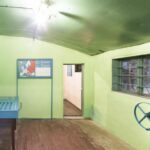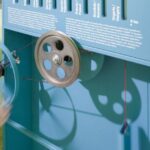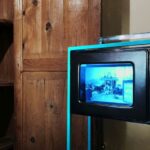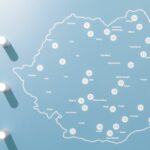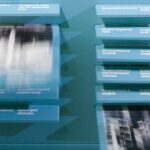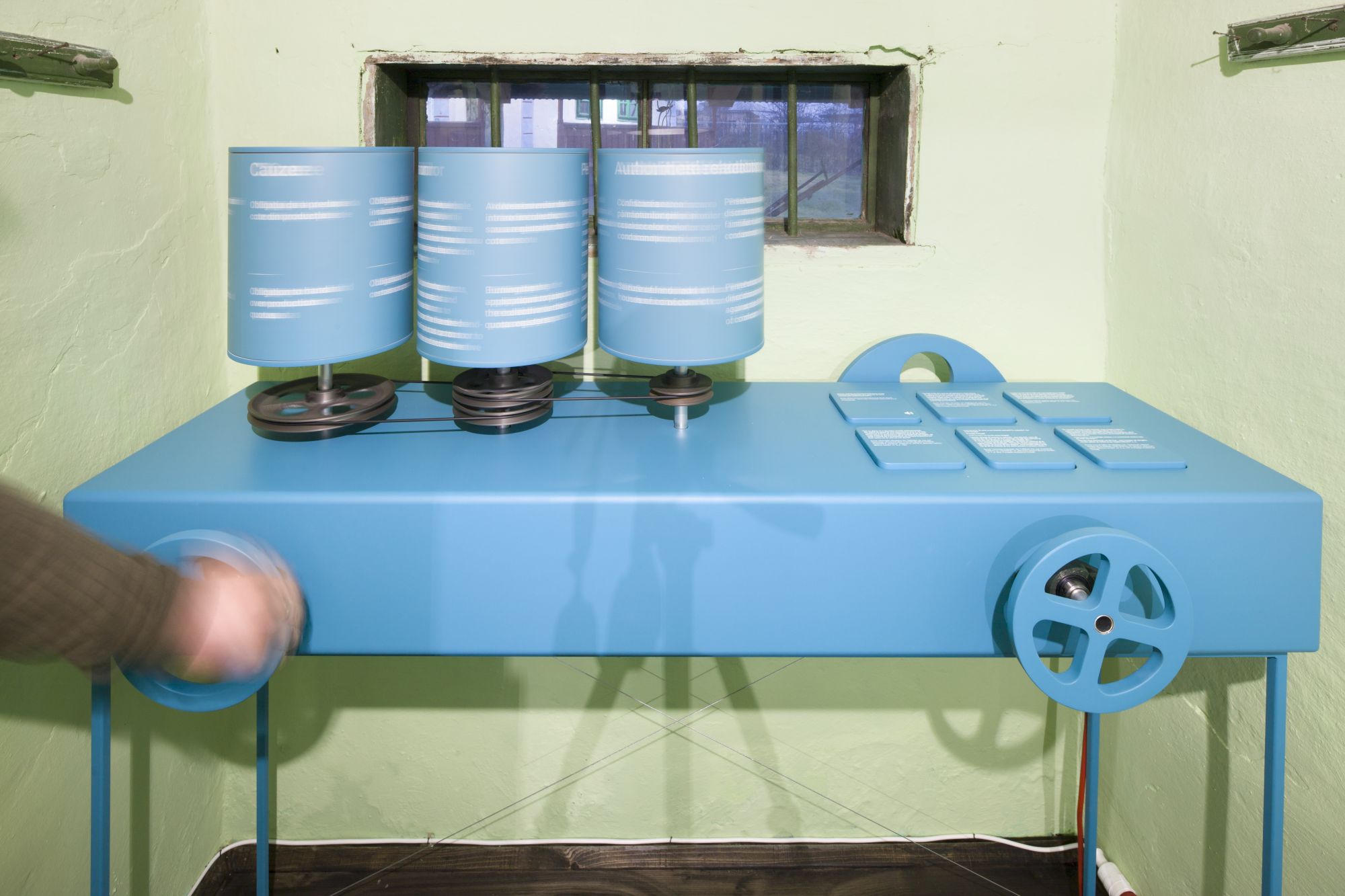Started in the autumn of 2019, by the initiative of a group of history fans and entrepreneurs in the village of Tămășeni (Neamț County, Romania) the museum quickly became a reality, and its exhibition opened in the first three rooms a year later. Between 2020-2021, the Museum of Collectivization had a quick evolution, and managed to finish its exhibition in another four rooms and to open an entire circuit in the street-facing house. In 2021, the project was nominated for the Bucharest Architecture Annual award, the section for exhibition, stands and scenography. We published in the 160 issue of Zeppelin an extensive article on the first part of the project. The present article focuses on the second stage, while still looking at it as a part of a coeherent and long-term project.
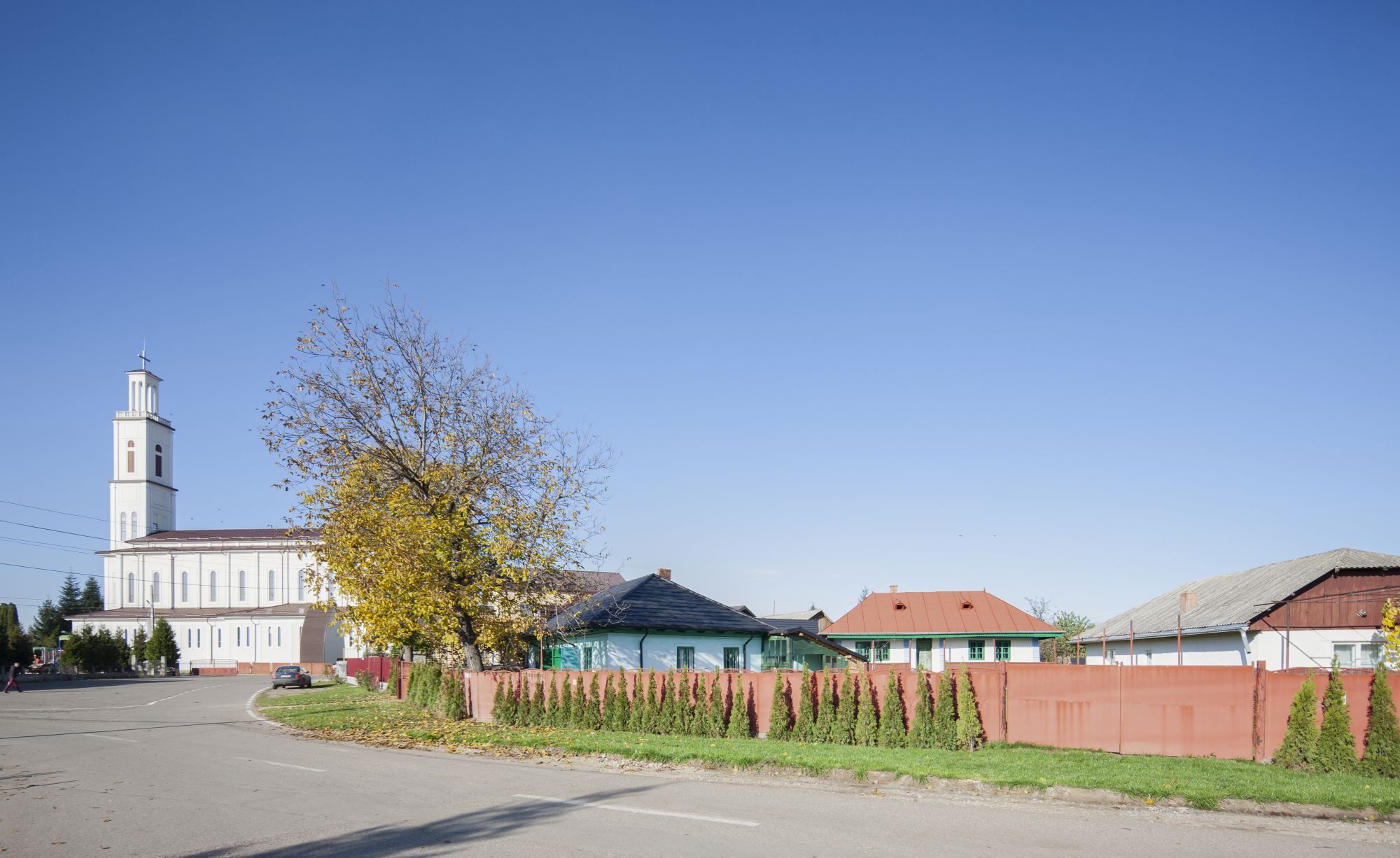 *Tămășeni village, the Museum of Collectivization. In the center, the new house, right, the old house
*Tămășeni village, the Museum of Collectivization. In the center, the new house, right, the old house
Text: Constantin Goagea
Foto: Andrei Mărgulescu
In Romania, the mass installation of Communism took place after World War II, with the process of collectivization of agriculture. The implementation of the model imposed by the Soviet Union in all the countries in the Communist block had disastrous economic effects, doubled by a social fracture that has yet to heal. The nationalization and collectivization were the means by which the Communist party consolidated its power, leading at the same time to an overturn of values on a social and moral level, with effects were are facing to this day, 70 years later, and 30 years after the fall of the Communist regime in Romania.
To the Romanian peasant, working the land was his meaning in life. The seizure of lands and the collectivization were made in a sudden and violent manner, with loss of human lives. Over 3 million peasants were the direct victims of collectivization between 1949-1962, other millions of Romanians living under the conditions set by the Socialist agriculture, and then by the post-1989 transition period. A public discussion on the traumas and abuses suffered by all these people can lead to a better understanding of the current phenomena in society, such as: the chaos in agriculture, the farmers’ reticence to associate, the relativization of theft, the appearance of local magnates, the effects of forced urbanization, the lack of respect for the public space, the estrangement of peasants, suddenly forced to live in blocks of flats, the loss of identity and moral guiding lines, the alienation.
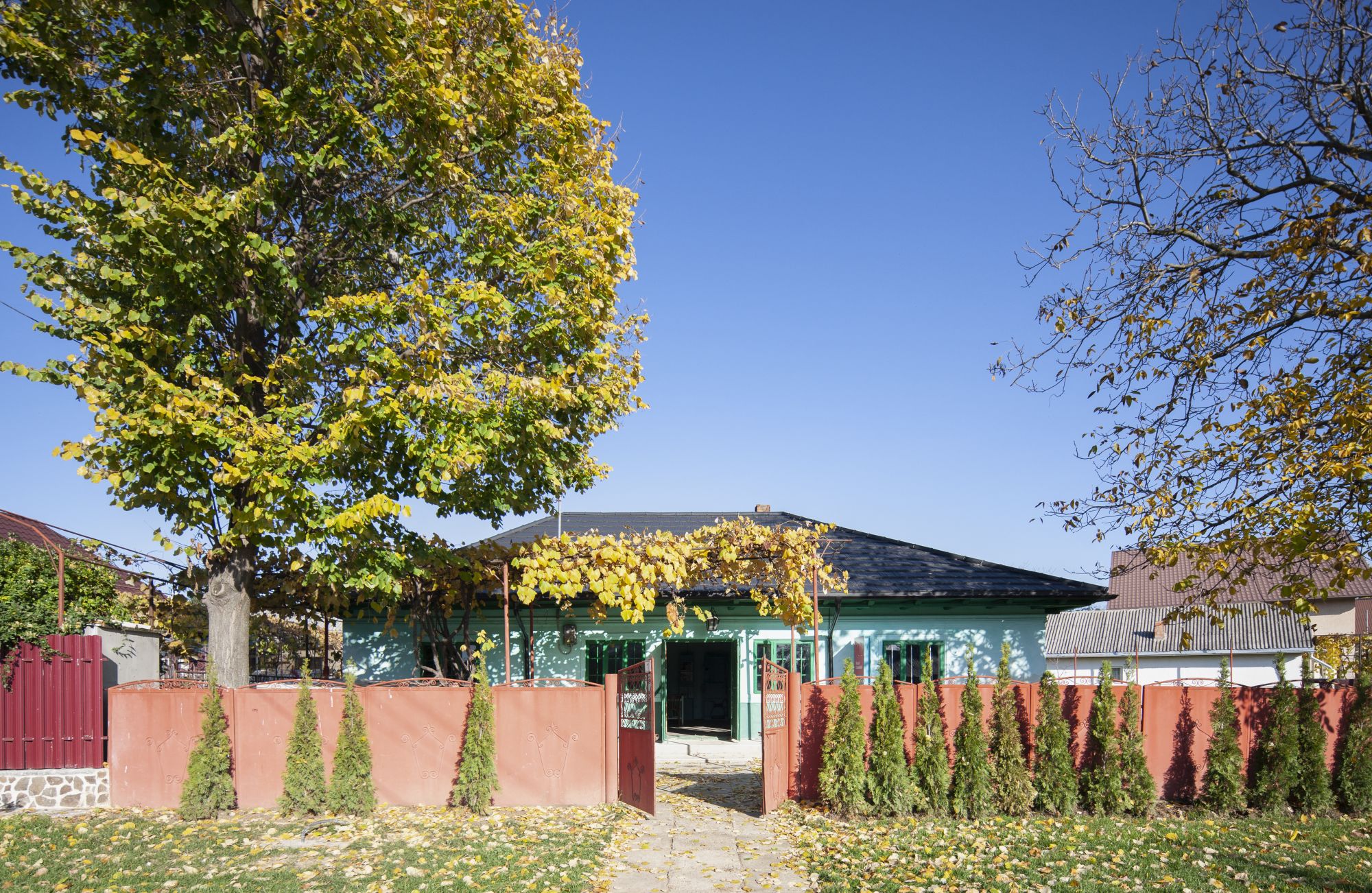 *Main entrance to the museum, seen from the street
*Main entrance to the museum, seen from the street
As an institution of remembrance, the Museum of Collectivization aims to contribute to the collective therapeutic process of release from the Romanians’ chronic feeling of distrust, both in the fellow men, and in their own forces. Public acknowledgement and exhibition of the dramas that took place in the recent history lay the ground for a more just and more balanced development of the society. And they also help working on the chance that tragedies like these should never happen again.
The new museum track in the new house includes 6 main themes:
- Quotas (1) – the peasants’ main issue, as they had to hand over as much as 70% of their crops to the production cooperatives. Failure to comply resulted in penalties ranging from the seizing of their house to deportation and prison.
- The House (2) – the rural domestic universe is precarious, humiliating and economically controlled, politically directed and overseen.
- The Land (3) – Communist property laws expropriated nearly all the Romanian peasants. The collectivization turns peasants into proletarians, employees on their former lands
- Bread (4) – polenta, the traditional food in Moldavia and southern Romania prior to Communism, is replaced by bread, but bread is rationalized and distributed unfairly, and the domestic production disappears
- Fury and Revolt (5) – the onset of anti-collectivist revolts is inevitable, but their repression by the Communist authorities is extremely violent
- East (6,7) – a comparative study of the collectivization of agriculture throughout the Communist bloc, marking its distinctive features as compared to the Soviet model
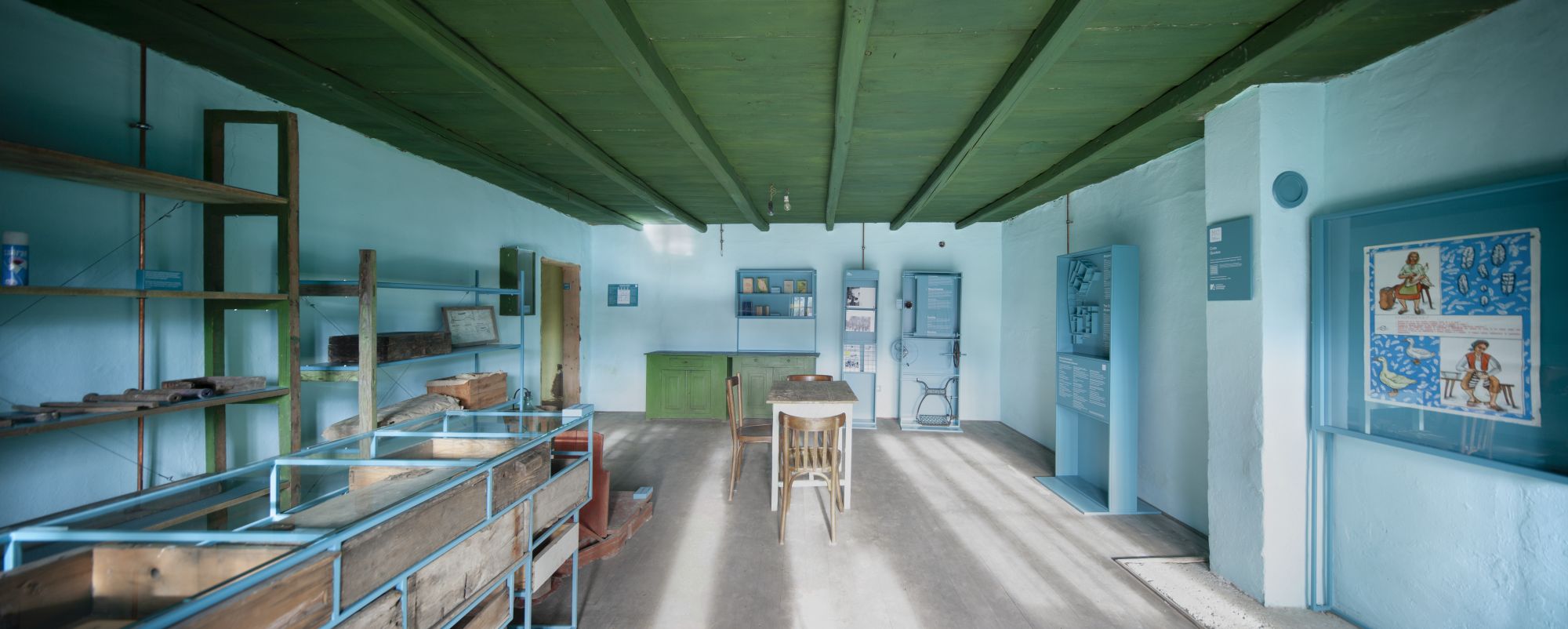 *The “Quotas” room (1), where the village store once was. Quotas were collected there, and it also housed the village pub
*The “Quotas” room (1), where the village store once was. Quotas were collected there, and it also housed the village pub
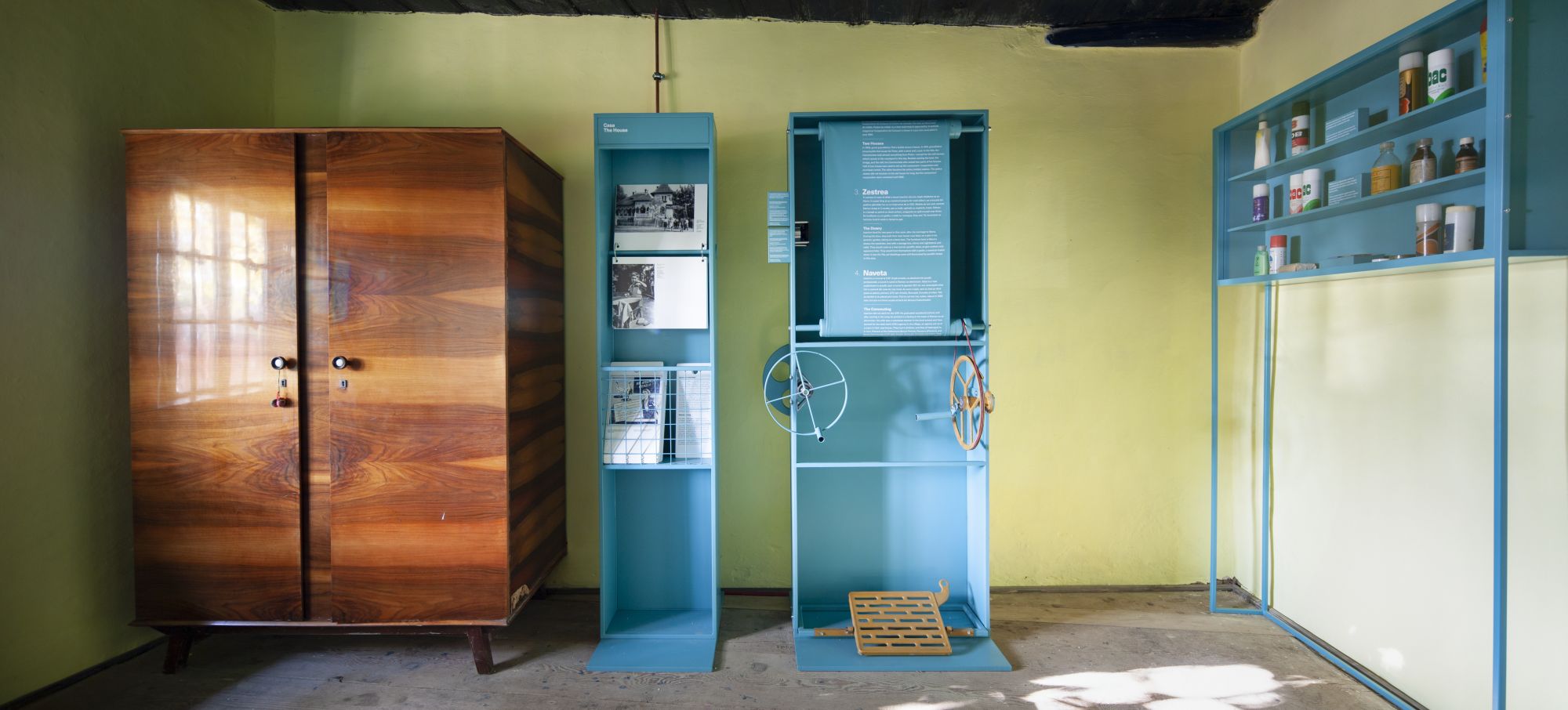 *The House” room (3) – interactive installations and displays featuring the domestic universe during the Communist period
*The House” room (3) – interactive installations and displays featuring the domestic universe during the Communist period
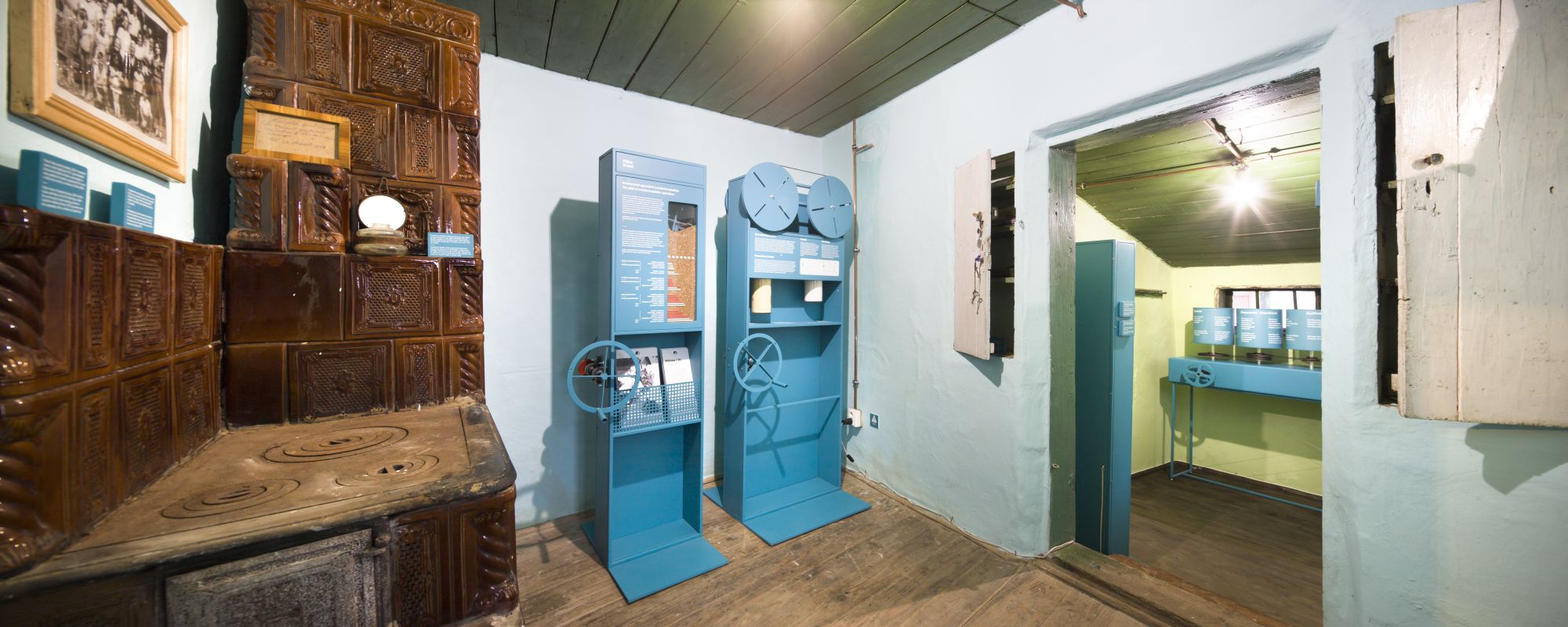 *The “Bread” room (4) – interactive installations speaking of agriculture and the consumption of bread after the collectivization. On the right, the entrance to Room 5 – “Fury and Revolt”
*The “Bread” room (4) – interactive installations speaking of agriculture and the consumption of bread after the collectivization. On the right, the entrance to Room 5 – “Fury and Revolt”
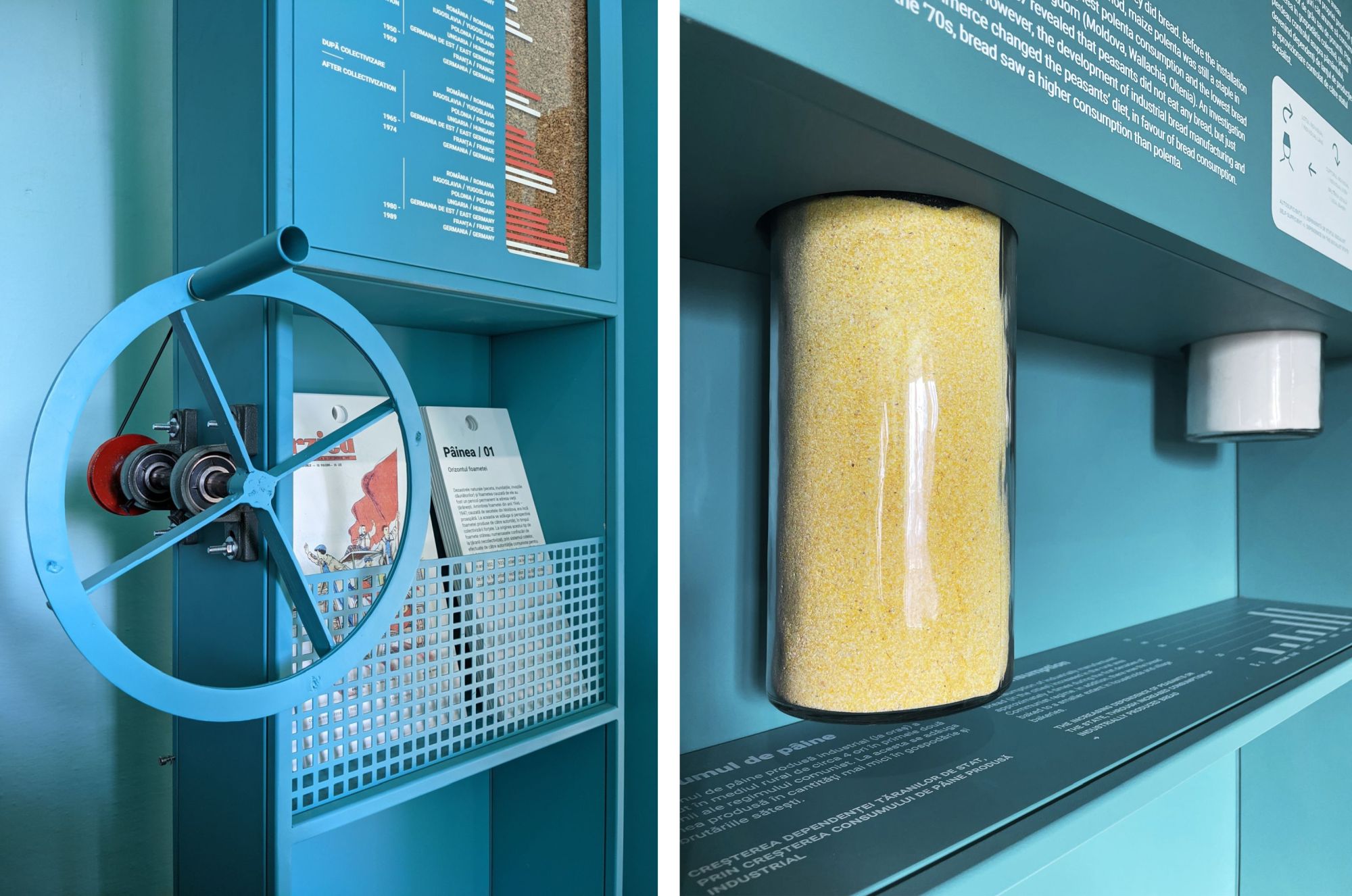 *Bread” (4) – installation detail explaining, on the one hand, the differences in productivity between the mechanized agriculture in Communist countries and capitalist ones, and on the other hand, the consumption of polenta and bread
*Bread” (4) – installation detail explaining, on the one hand, the differences in productivity between the mechanized agriculture in Communist countries and capitalist ones, and on the other hand, the consumption of polenta and bread
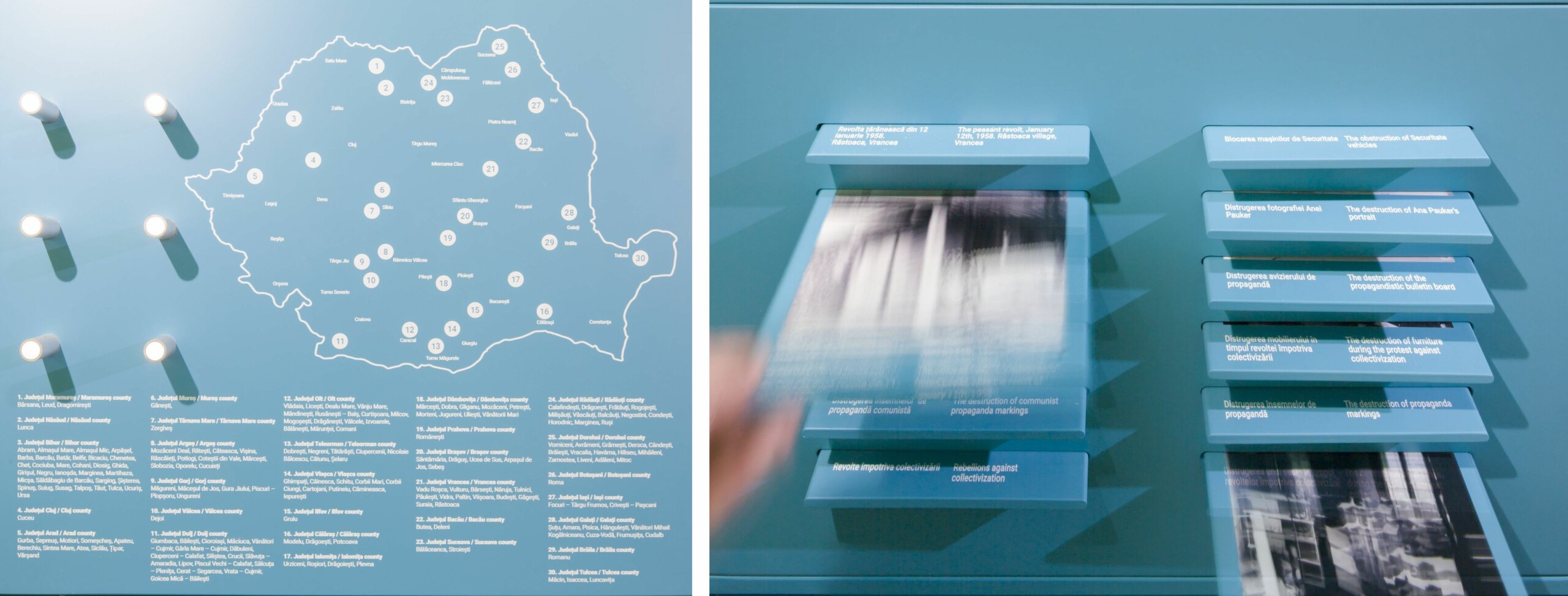 *Fury and Revolt” (room 5) – the „Map of Revolts” installation; below right, detail with the image of a ravaged Agricultural production cooperative
*Fury and Revolt” (room 5) – the „Map of Revolts” installation; below right, detail with the image of a ravaged Agricultural production cooperative
 *The “Fury and Revolt” room (5) interactive mechanical installation explaining the cycle of fury
*The “Fury and Revolt” room (5) interactive mechanical installation explaining the cycle of fury
The completion and opening of the first house marks quite well the presence of the museum in Tămășeni: on the one hand, older locals remembered the village quota collection centre, and on the other hand, the local school holds part of its history lessons here, learning about this violent period in a not-so-distant past.
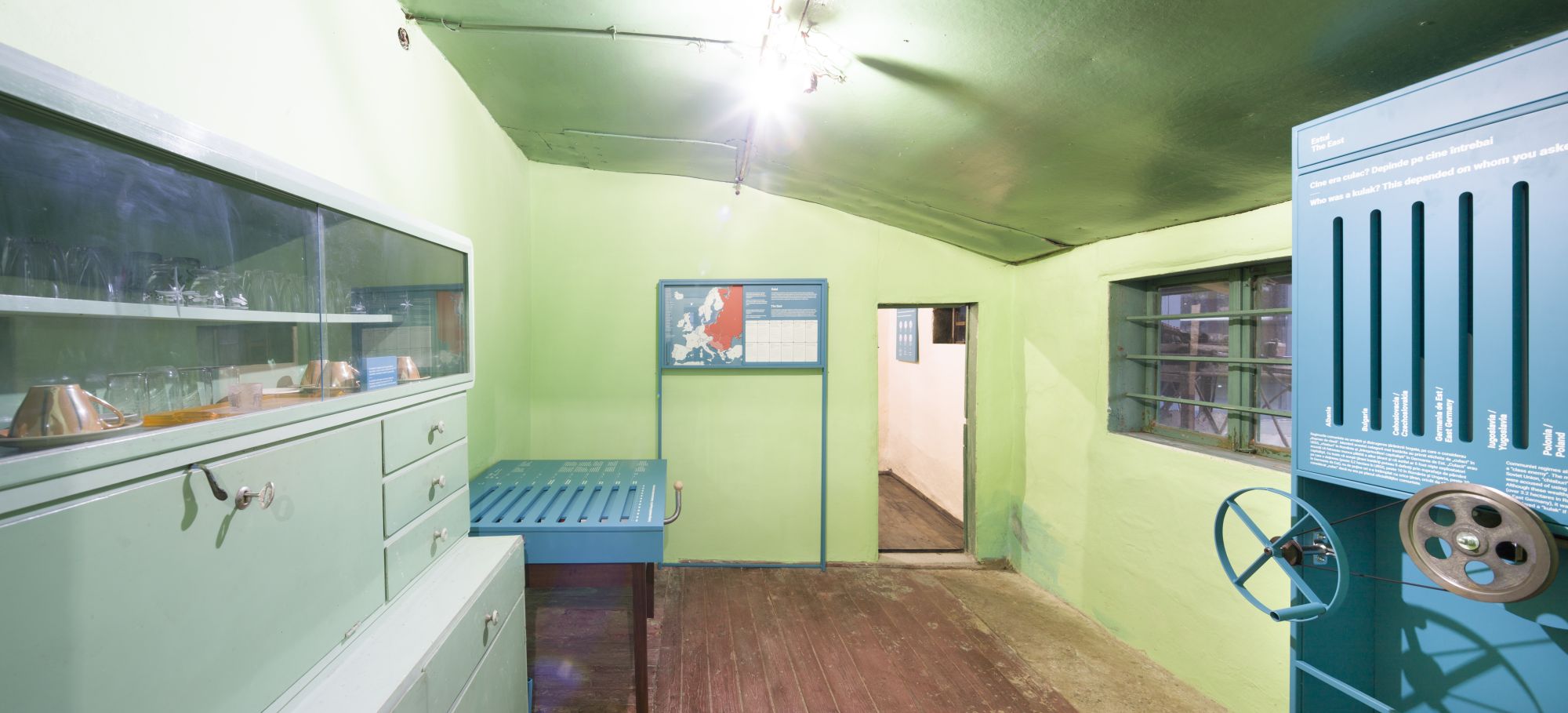 *“East” room (6) – interactive installations explaining the collectivization differences between the countries in the Eastern bloc
*“East” room (6) – interactive installations explaining the collectivization differences between the countries in the Eastern bloc
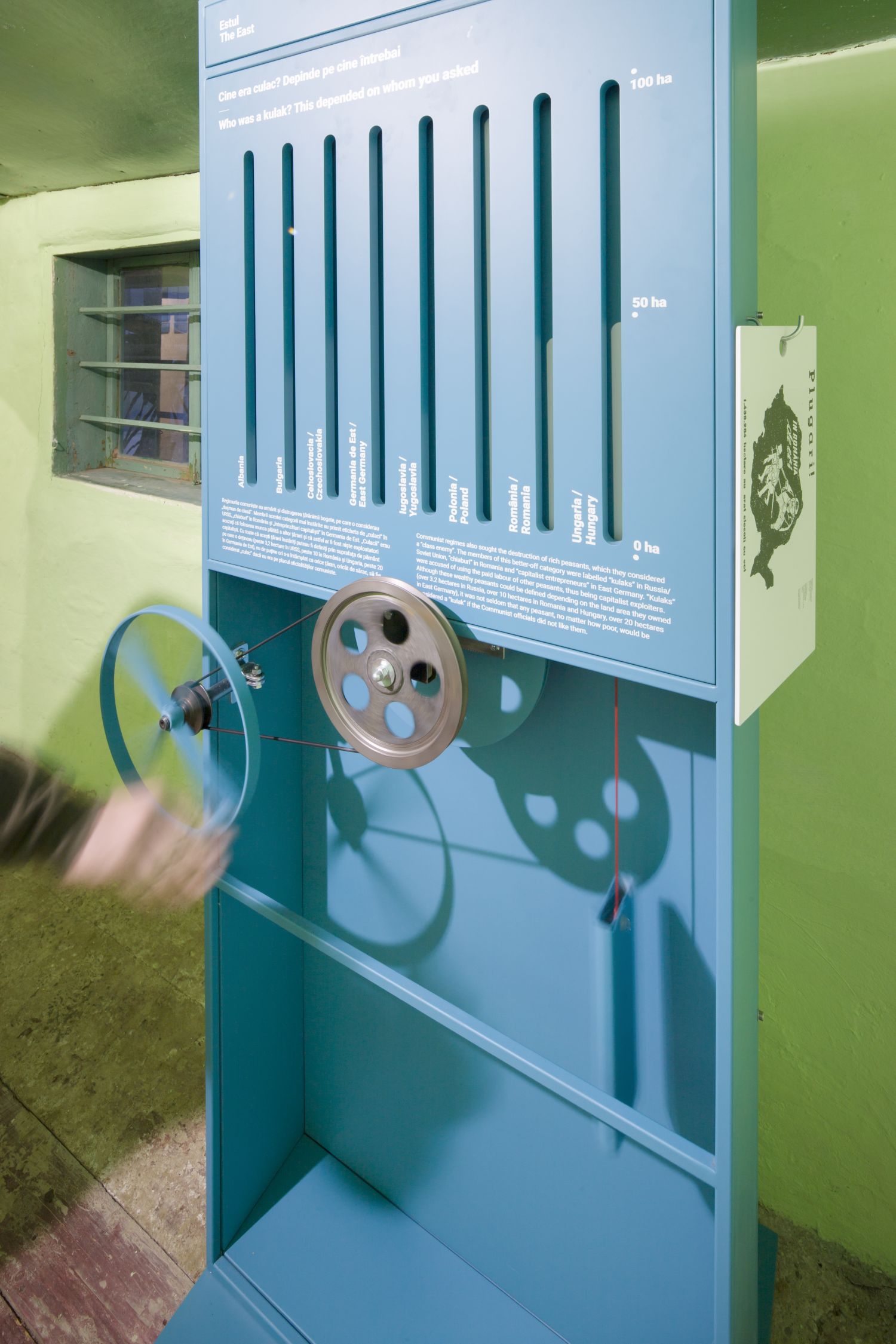 ““East”(6) – the definition of the kulak in each country in the Eastern bloc, depending on the amount of land owned
““East”(6) – the definition of the kulak in each country in the Eastern bloc, depending on the amount of land owned
The 7 finished tooms include over 100 exhibits of authentic pieces, furniture, publications, posters, household items, tools, money, photographs from the Communist period. They were cleaned, inventoried and documented.
 *East” – video installation, video archive with a fragment of propaganda and anti-kulak materials
*East” – video installation, video archive with a fragment of propaganda and anti-kulak materials
The entire museum is made based on interactive mechanical installations, which allow access to photographs, texts and audio recordings. The museum’s presence is signalled by a luminous totem by the street, and the interior includes a personalized signage system which helps guide visitors though the space.
The museum has a clear curatorial vision and design project, but they also evolve as new exhibits were discovered and purchased.
Next, the museum will develop both the exhibition to be included in the assembly’s old house, and the media library, in the space between the two houses, alongside the outdoor exhibition which contains fragments recovered from agricultural machines.
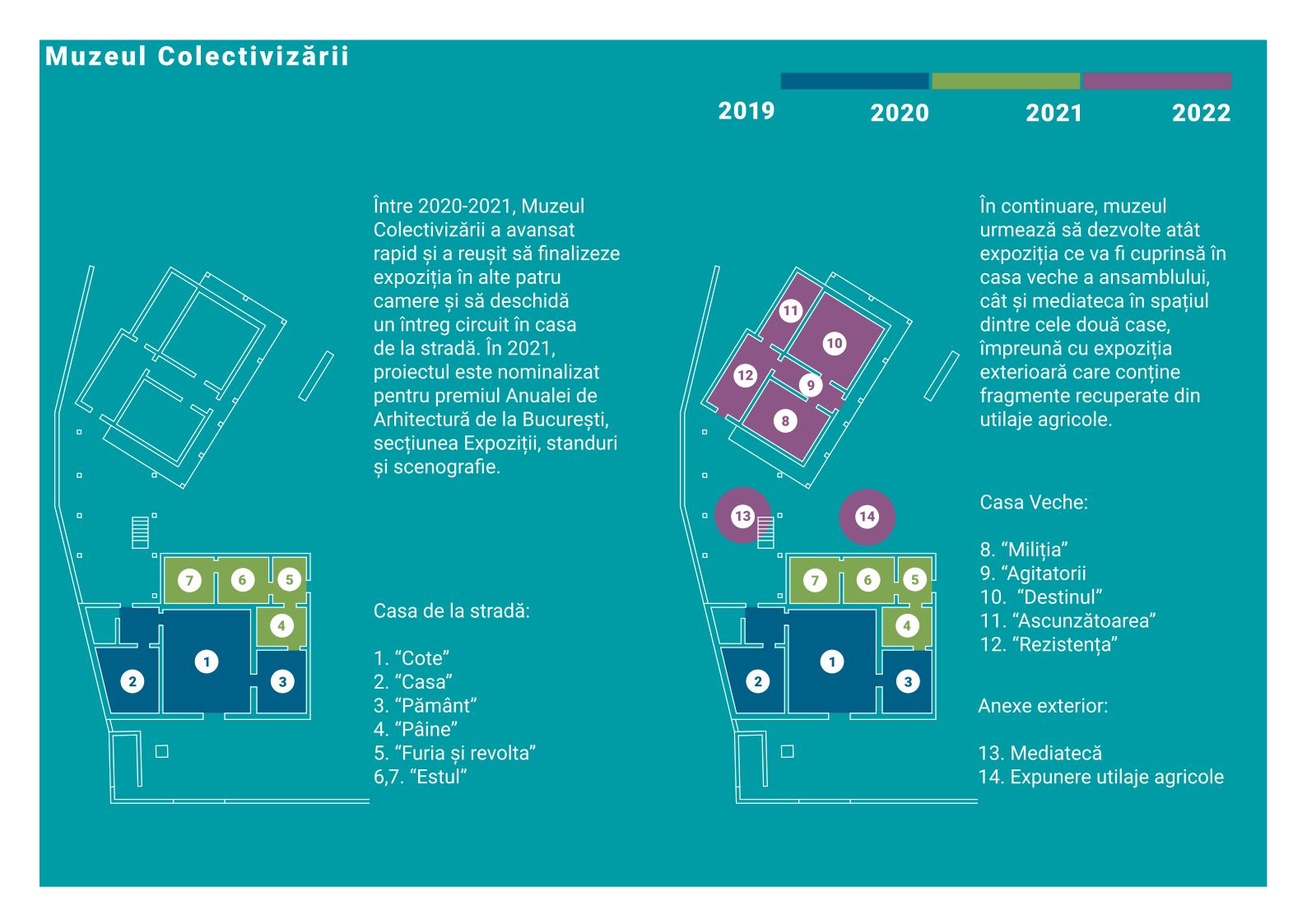 *Plan of the museum – a former rural household.
*Plan of the museum – a former rural household.
The street-facing house (also called the New House) includes the following rooms: 1. “Quotas”
2. “The House”. 3. “The Land”.4. “Bread”.5. “Fury and Revolt”. 6.7. “East”.
Rooms 1-3 and the story of the place have been presented in detail in Zeppelin 160.
The Old House will develop the following themes:8. “The Militia”. 9. “The Agitators”. 10. “The Destiny”. 11. “The Hideout”. 12. “The Resistance”.
The exterior spaces and annexes will be hosting: 13. The media library. 14. Agricultural machines
Info & credits
Project initiated by: Asociația Memorialul Colectivizării din România/ The Romanian Museum of Collectivization Association: Iulian Bulai, Ovidiu Albert, Octavian Parțac, Paul Bălhuc, Eva Marie Bulai
Partner: Asociația Mușatinii Roman/ Mușatinii Roman Association
Curators: Cosmina Goagea, Justin Baroncea, Constantin Goagea, Dragoș Neamu
Historians: Virgiliu Țârău – Babeș-Bolyai university – UBB Cluj, Vlad Pașca
Research contributions: Civic Academy Foundation – Memorial to the Victims of Communism, National Council for the Study of the Securitate Archives – CNSAS, The Institute for the Investigation of Communist Crimes in Romania – IICCMER, Goethe-Institut Bucharest:
Museum design and interactive system sevelopment :Zeppelin Design – Cosmina Goagea, Justin Baroncea, Ioana Naniș, Andrei Angelescu, Emanuel Birtea, Cristina Ginara, Alexandru Ivanof, Iulia Panait, Alexandru Voicu, Mugur Grosu, Constantin Goagea
Graphic design and visual identity: Radu Manelici, Artemisa Pascu, Andrei Grosu
Translation and proofreading: Anamaria Sasu, Tom Wilson
Craftsmen: Sigmund Pleym Hågensen, Maria Gașpal, Ion Gașpal, Maria Burlacu, Valerian Ilinca, Maria Bulai, Valentin Antonică, Mihai Antonică
Interviews with: Anton Giurgi, Ioan Dorcu, Ionel Bulai, Zaharia Aprofirei, Maria Darie, Constantin Darie, Ion Ciupercă, Mihai Pascaru
Images: AGERPRES, Azopan, Online image Archive of Romanian Communism, Atelierul de grafică, Memorialul Închisoarea Pitești, TV Arheolog
Web design and communication: Tudor Cora
Exhibition production: Q Group Proiect, Acant Design, Azero, Promotas Advertising, Set Design
Related article:


